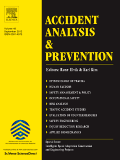
ACCIDENT ANALYSIS AND PREVENTION
Scope & Guideline
Exploring the Dynamics of Safety and Risk
Introduction
Aims and Scopes
- Traffic Safety Research:
The journal prioritizes studies that investigate factors contributing to traffic accidents, including behavioral, environmental, and infrastructural influences, aiming to identify effective interventions for reducing collision rates. - Human Factors and Driver Behavior:
Research on human behavior in driving contexts is a core focus, exploring how cognitive, emotional, and social factors influence driving performance, decision-making, and risk-taking. - Automated and Connected Vehicle Safety:
With the rise of automated driving technologies, the journal emphasizes research on the safety implications of connected and automated vehicles, examining their interactions with human drivers and vulnerable road users. - Crash Prediction and Risk Assessment:
The journal publishes methodologies for predicting crash occurrences and evaluating risks, employing advanced statistical and machine learning techniques to enhance the predictive capabilities of safety assessments. - Pedestrian and Vulnerable Road User Safety:
A significant scope involves research aimed at understanding and improving the safety of pedestrians, cyclists, and other vulnerable road users, addressing their interactions with motor vehicles. - Policy and Infrastructure Evaluations:
The journal also considers studies evaluating the effectiveness of road safety policies and infrastructure designs, contributing to evidence-based decision-making in transport planning.
Trending and Emerging
- Integration of Artificial Intelligence and Machine Learning:
Recent publications highlight the increasing use of AI and machine learning techniques in crash prediction and risk assessment, showcasing their potential to analyze large datasets and improve safety outcomes. - Focus on Vulnerable Road Users:
There is a growing emphasis on understanding the safety of vulnerable road users, particularly in the context of interactions with automated vehicles, reflecting societal shifts towards more inclusive road safety measures. - Behavioral Insights and Psychological Factors:
Research is increasingly exploring the psychological aspects of driving behavior, including emotional and cognitive factors that influence risk perception and decision-making, particularly in the context of distracted driving. - Real-Time Data Utilization:
Emerging studies are leveraging real-time data from connected vehicles and smart infrastructure, aiming to enhance situational awareness and improve safety interventions dynamically. - Impact of Environmental Factors:
There is an emerging focus on how environmental conditions, such as weather and urban design, influence crash risks and driver behavior, indicating a more holistic approach to road safety.
Declining or Waning
- Traditional Crash Analysis Methods:
There appears to be a waning interest in conventional statistical methods for crash analysis, as researchers increasingly adopt machine learning and advanced modeling techniques that provide more nuanced insights. - Generalized Driver Behavior Studies:
General studies on driver behavior without specific context or application are less frequent, with a shift towards more targeted research that addresses specific populations or conditions. - Non-automated Driving Research:
As the field evolves, studies centered exclusively on non-automated driving contexts are becoming less common, with more emphasis on how automation influences driver behavior and safety. - Basic Safety Education Programs:
Research focused on basic road safety education programs is diminishing, likely due to a growing emphasis on integrated approaches that combine education with technology and policy interventions. - Single-Factor Analysis of Crashes:
There is a noticeable decrease in studies that analyze crashes based on single factors, as contemporary research increasingly recognizes the complex interplay of multiple variables in accident causation.
Similar Journals

Automotive Innovation
Unleashing the Power of Innovation in TransportationAutomotive Innovation is a leading academic journal dedicated to the advancements and transformative trends in the field of automotive engineering. Published by SpringerNature, this esteemed journal boasts an impressive Q1 ranking in Automotive Engineering for 2023, reflecting its high impact and relevance with a rank of #17 out of 125 in the Scopus database, placing it in the 86th percentile. Focused on publishing cutting-edge research from 2018 to 2024, it serves as an essential platform for researchers, professionals, and students interested in exploring the latest innovations, technologies, and practices in automotive design, manufacturing, and sustainability. Though not an open access journal, its commitment to advancing knowledge in automotive engineering makes it an invaluable resource for anyone invested in the future of transportation. For further insights and research findings, the journal can be accessed at its editorial office located in the United States.
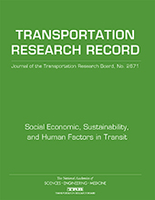
TRANSPORTATION RESEARCH RECORD
Navigating the Path of Transportation InnovationTRANSPORTATION RESEARCH RECORD is a premier journal published by SAGE PUBLICATIONS INC, focusing on the latest advancements and research in the fields of civil and structural engineering as well as mechanical engineering. Since its inception in 1974, this journal has become an essential platform for disseminating innovative methodologies, case studies, and comprehensive reviews that address critical issues in transportation systems and infrastructure. With a respectable Q2 ranking in both engineering categories as of 2023, it solidifies its position among reputable publications, catering to a diverse range of scholars, professionals, and students. The journal not only facilitates access to high-quality research but also plays a pivotal role in shaping policy and practice through its robust findings. For those invested in the engineering disciplines, particularly within the transportation domain, TRANSPORTATION RESEARCH RECORD is an invaluable resource, with a wide array of topics covered throughout converged years, from 1974 to 1990, and from 1993 to 2024, ensuring a comprehensive exploration of historical and contemporary challenges in transportation.
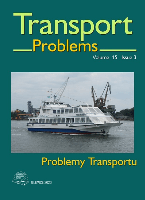
Transport Problems
Driving Knowledge Forward in Automotive and Mechanical EngineeringTransport Problems, published by the Silesian University of Technology, Faculty of Transport, is a distinguished open-access journal that has been advancing scholarship in the fields of Automotive Engineering, Mechanical Engineering, and Transportation since its inception in 2007. With an ISSN of 1896-0596 and an E-ISSN of 2300-861X, this journal serves as a vital platform for researchers and practitioners to disseminate innovative research findings and explore fundamental issues in transport systems and technologies. Based in Poland, the journal covers various topics including transportation logistics, vehicle dynamics, and environmental impacts, thereby addressing critical challenges faced in the transportation sector globally. As reflected in its Scopus rankings, the journal occupies respectable quartiles and continues to contribute valuable insights to the academic community. By making its content freely accessible, Transport Problems significantly enhances the ability of researchers and students alike to engage with the latest developments in transport engineering and contribute to this ever-evolving field.

Journal of Road Safety-JRS
Bridging research and practice for safer journeys.Journal of Road Safety (JRS) is a premier open-access journal published by the Australasian College of Road Safety, dedicated to advancing the field of road safety research and knowledge dissemination. With its establishment in 2019, JRS aims to bridge the gap between academic research and practical applications to enhance road safety outcomes across diverse populations. The journal is committed to publishing high-quality, peer-reviewed articles that contribute to the understanding of safety measures, risk assessment, and transportation reliability. Notably, it holds a significant presence in its category quartiles, ranking Q3 in Safety Research, Safety, Risk, Reliability and Quality, Social Sciences, and Transportation for 2023, indicating its emerging influence in these vital areas. With an ongoing open-access model since 2020, JRS ensures that its valuable research findings are freely available to researchers, professionals, and students alike, thus fostering a global dialogue on best practices and innovations in road safety. The journal is recognized in Scopus rankings, highlighting its role in enhancing the visibility and impact of its published works within the broader scientific community.

PROCEEDINGS OF THE INSTITUTION OF CIVIL ENGINEERS-TRANSPORT
Transforming Ideas into Sustainable Infrastructure SolutionsPROCEEDINGS OF THE INSTITUTION OF CIVIL ENGINEERS-TRANSPORT, published by Emerald Group Publishing Ltd, is a vital scholarly journal dedicated to advancing knowledge in the fields of civil and structural engineering and transportation. With an ISSN of 0965-092X and an E-ISSN of 1751-7710, this journal has been a cornerstone of academic discourse since its inception in 1992, providing a platform for innovative research and case studies up until 2024. Although it currently holds a Q4 quartile ranking in both Civil and Structural Engineering and Transportation categories, its content aims to bridge gaps in existing literature, making it a relevant source for researchers, professionals, and students alike. The journal offers an array of insightful articles that contribute to the evolution of engineering practices and transportation methodologies, fostering a global dialogue among industry stakeholders. While it operates under a subscription model, the journal remains committed to enhancing public access to pivotal findings in engineering disciplines, driving forward the agenda of sustainable and efficient infrastructure development.

Transportation Safety and Environment
Innovating solutions for sustainable transportation practices.Transportation Safety and Environment is an esteemed open-access journal published by Oxford University Press, dedicated to advancing the field of transportation safety and environmental sustainability. Since its inception in 2019, the journal has rapidly gained recognition with an impressive Q2 category ranking in Control and Systems Engineering, Engineering (miscellaneous), and Safety, Risk, Reliability and Quality as of 2023. With an E-ISSN of 2631-4428, it provides a platform for high-quality research that addresses critical safety challenges and environmental impact within the transportation sector, covering a wide array of topics from vehicle safety measures to ecological considerations in transportation infrastructure. The journal’s open-access model promotes widespread distribution and accessibility of research findings, enabling researchers, professionals, and students to engage with the latest advancements and contribute to future developments in the field. Located in the heart of the United Kingdom at Great Clarendon St, Oxford OX2 6DP, England, Transportation Safety and Environment stands at the forefront of fostering innovative solutions for safer and more sustainable transportation practices worldwide.

Transportation Letters-The International Journal of Transportation Research
Transforming transportation knowledge into actionable insights.Transportation Letters - The International Journal of Transportation Research, published by Taylor & Francis Ltd, is a leading journal dedicated to advancing the field of transportation studies. With an impact factor that reflects its significance within the academic community and a prestigious ranking of Q2 in Transportation, this journal provides a critical forum for the dissemination of innovative research and insights in transportation systems, policies, and technologies. Covering a broad scope of topics from urban mobility to logistics and infrastructure, Transportation Letters serves as an essential resource for researchers, professionals, and students aiming to deepen their understanding of transportation issues facing society today. With over a decade of publication since 2009, the journal has established a solid reputation, ranking 46th out of 141 in Scopus's transportation category, placing it in the 67th percentile. Although it does not operate under an open-access model, it remains committed to accessibility through various subscription options, ensuring that vital research is available to those shaping the future of transportation.
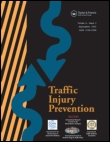
Traffic Injury Prevention
Elevating research to protect every road user.Traffic Injury Prevention is a premier academic journal dedicated to disseminating critical research and innovative findings in the field of injury prevention, with a particular focus on traffic-related incidents. Published by Taylor & Francis Inc, this journal serves as a vital platform for communication among researchers, policymakers, and practitioners in public health, safety research, and environmental health. With an impressive impact factor and a robust ranking—earning a place in the Q2 quartile for Public Health, Environmental and Occupational Health, and Q1 for Safety Research—it reflects the journal's significant contributions to advancing knowledge and practice in reducing traffic injuries and fatalities. Since its inception in 2002, Traffic Injury Prevention has highlighted pivotal studies and interventions that inform best practices, encouraging a safer environment for all road users. The journal is essential reading for anyone involved in traffic safety, from researchers and public health officials to educators and students. As we look towards the future, contributions to this journal not only inform current practices but also shape ongoing research, policy, and education aimed at preventing traffic injuries worldwide.
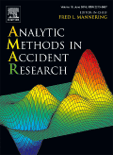
Analytic Methods in Accident Research
Empowering researchers to innovate in safety and transportation.Analytic Methods in Accident Research, published by ELSEVIER, is an esteemed journal dedicated to the rigorous exploration of methodologies in safety research and transportation studies. Established in 2014, the journal serves as a vital platform for researchers, practitioners, and policymakers focusing on innovative approaches to accident analysis, ultimately aiming to enhance public safety and improve transportation systems. With an impressive impact factor reflected in its Q1 rankings in both Safety Research and Transportation, the journal ranks #1 out of 109 in Safety Research and #2 out of 141 in Transportation, showcasing its influential position within these fields. The journal emphasizes open access to a range of articles, making cutting-edge research accessible to a diverse audience. As it converges toward its 2024 milestone, Analytic Methods in Accident Research continues to play a crucial role in fostering innovative findings and solutions, making it an indispensable resource for any scholar or professional engaged in safety and transportation research.

International Journal of Intelligent Transportation Systems Research
Enhancing Mobility with Innovative ResearchInternational Journal of Intelligent Transportation Systems Research, published by Springer, stands as a premier platform for disseminating cutting-edge research in intelligent transportation systems (ITS). Established in 2010, this journal has made significant strides in addressing the complexities and innovations within the realm of transportation engineering, automotive technology, control systems, and information systems, reflected in its impressive categorization across diverse engineering and applied mathematics disciplines with notable rankings in Q2 and Q3 quartiles. With a steadfast commitment to advancing knowledge and fostering discussions that bridge academia and industry, the journal welcomes high-quality research articles, reviews, and case studies that explore emerging trends, technologies, and methodologies shaping the transport sector. Researchers, professionals, and students alike will find a wealth of insights aimed at optimizing operational efficiencies and enhancing safety and sustainability in transportation networks. As of 2023, the journal continues to thrive, seeking to compile contributions that align with its mission of improving transportation systems globally.